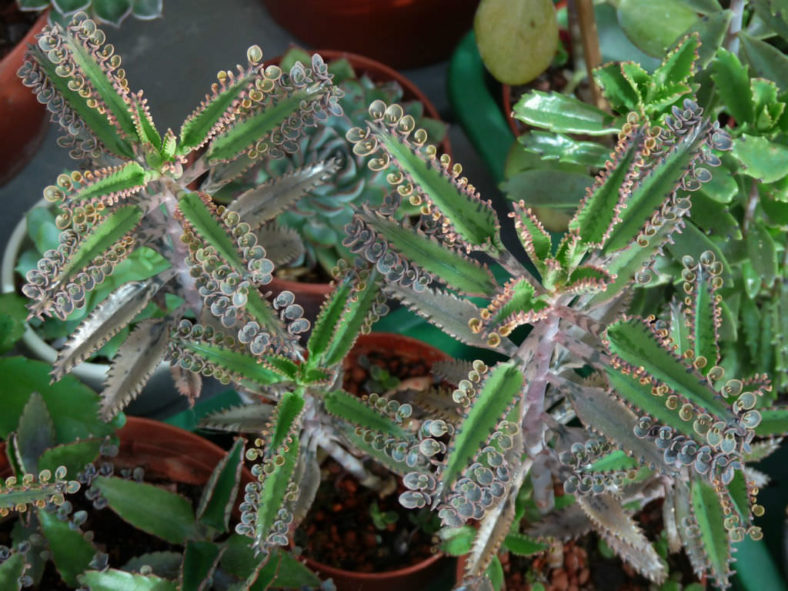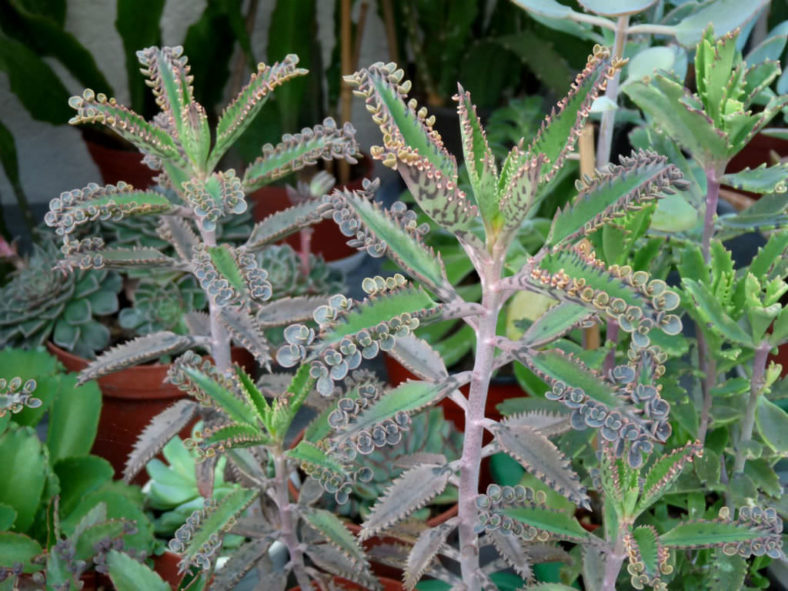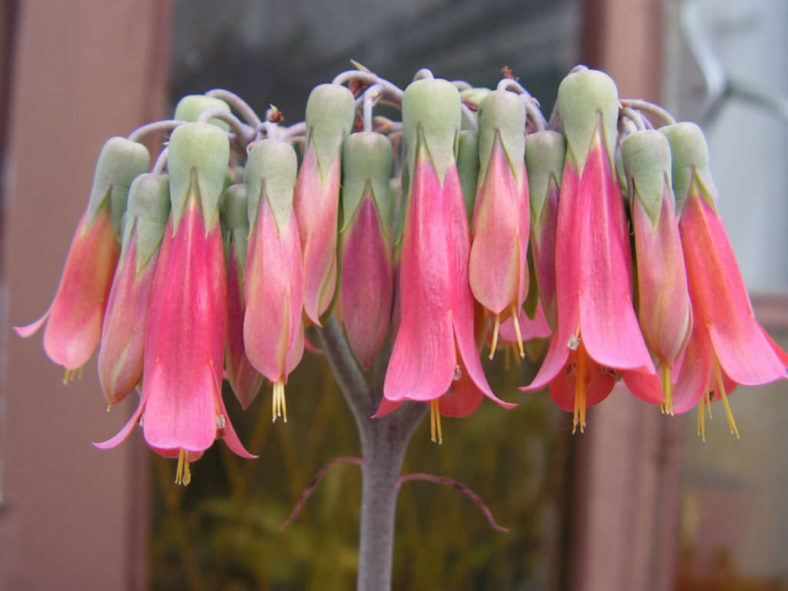Scientific Name
Kalanchoe × houghtonii D. B. Ward
Common Name(s)
Alligator Plant, Houghton's Hybrid, Mother of Millions Hybrid, Mother of Thousands, Mother of Thousands 'Houghtonii', Mexican Hat Plant, Good Luck Plant, Devil's Backbone
Synonym(s)
Bryophyllum × houghtonii, Bryophyllum tubimontanum, Kalanchoe hybrida, Kalanchoe 'Hybrida', Kalanchoe 'Houghtonii'
Scientific Classification
Family: Crassulaceae
Subfamily: Sedoideae
Tribe: Kalanchoeae
Genus: Kalanchoe
Etymology
The hybrid epithet "houghtonii" (pronounced "ho-TON-ee-eye") honors Arthur Duvernoix Houghton (1870- 1938), a medical doctor and a botanist specializing in cacti.
Origin
This succulent is a hybrid created in the 1930s in the United States as a result of experimental crossings between Kalanchoe daigremontiana and Kalanchoe delagoensis (formerly known as Kalanchoe tubiflora), two species endemic to Madagascar. Thanks to its large colonizing capacity, mainly derived from the production of asexual plantlets, this hybrid soon escaped from cultivation and quickly spread in many parts of the world.
Description
Kalanchoe × houghtonii is a monocarpic succulent with an erect, unbranched stem that bears boat-shaped leaves with serrated margins and plantlets produced at the margins. The stem can grow up to 30 inches (75 cm) tall. The leaves are succulent, emerald green to brownish-green, usually with purple splotches beneath.
The flowers are pendulous, typically dark red, sometimes pinkish-orange or pinkish-yellow, and appear in winter. The inflorescence is a dense cyme with up to 100 or more flowers and can grow up to 3.3 feet (1 m) in height. The flowers can reach a length of 1.2 inches (3 cm).
Many succulent enthusiasts do not realize this hybrid differs from its variegated form, Kalanchoe 'Pink Butterflies', in which plantlets lack the chlorophyll needed to survive alone.
Kalanchoe × houghtonii is often confused with Kalanchoe daigremontiana.
Forms and Hybrids

Hardiness
USDA hardiness zones 10a to 11b: from 30°F (-1.1°C) to 50°F (10°C).
How to Grow and Care
Kalanchoe care is minimal, but be cautious about light levels. Intense sunlight can burn the tips of the leaves. Place pots in partial sun to light shade areas when growing Kalanchoes.
The flowering varieties are highly rewarding for their colorful and long-lasting flowers. They prefer bright, sunny locations, especially in the growing season. Water moderately from fall to winter when the growth is most active. Reduce watering during the hottest summer months when the plants are mostly dormant and winter when the growth slows down significantly. Let the soil surface dry out between waterings. Watch the fleshy leaves for signs of water distress. An ordinary potting soil mix is fine. Feed bi-weekly during the growing season with a liquid fertilizer, or use slow-release pellets.
These small plants require repotting every few years. When repotting, take additional care in handling as the leaves are somewhat brittle and can snap easily. Clay pots work exceptionally well for planting Kalanchoes. Ensure pots can drain well and saucers can empty easily.
Learn more at How to Grow and Care for Kalanchoe.
Links
- Back to genus Kalanchoe
- Succupedia: Browse succulents by Scientific Name, Common Name, Genus, Family, USDA Hardiness Zone, Origin, or cacti by Genus
Photo Gallery
Click on a photo to see a larger version.


